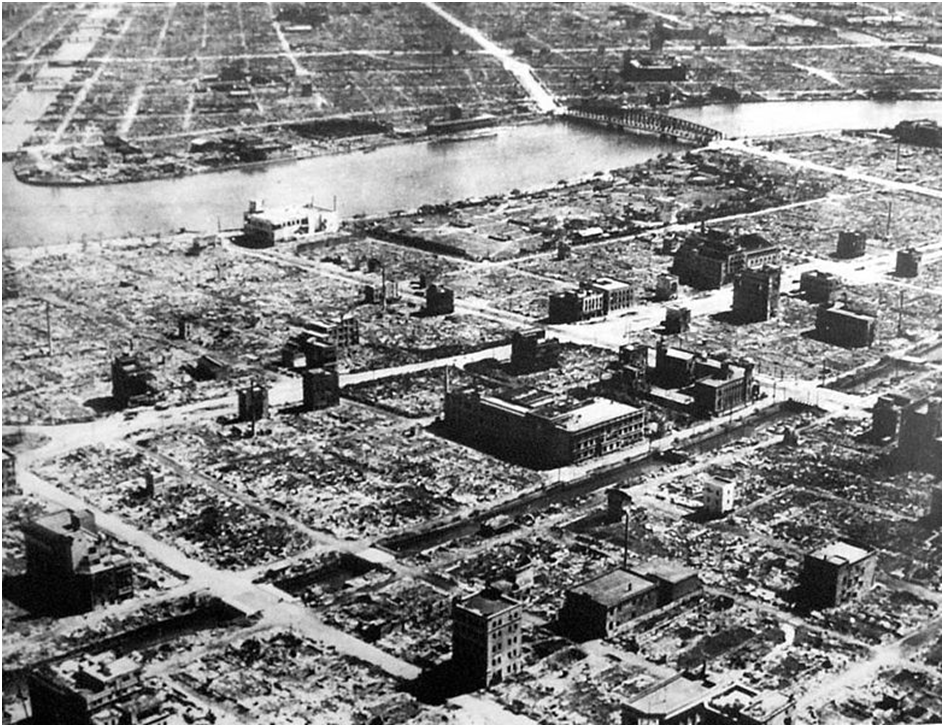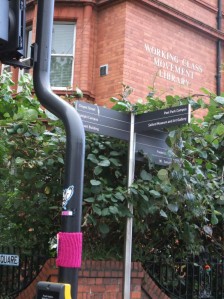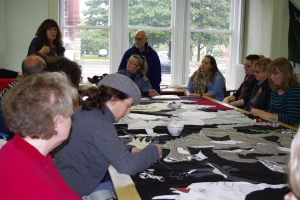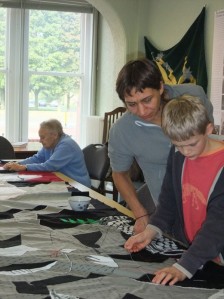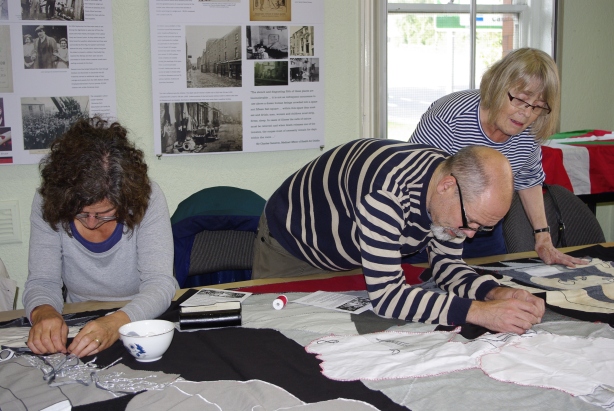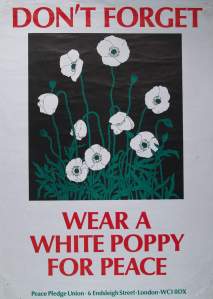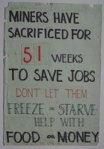Today marks the seventieth anniversary of the firebombing of Tokyo. On the evening of March 9th 1945 over 1600 bombs were dropped on Tokyo in what was then the single largest number of casualties in one night in human history. Whilst estimates of those who died are difficult to verify, the range of those killed is generally taken to be between 75,000 and 125,000.
What marked that night was the first large scale use of napalm, a product which when combined with white phosphor would ‘penetrate deep into the musculature, where it would continue to burn, day after day’ (1). In order to perfect the technique of bombing with such a new technological approach a replica of a Japanese village was built in Utah in order to understand the nature of the challenge. In the raid of March 9th and 10th the bombers were deployed in patterns which had previously been organised to maximise levels of destruction.
|
Public Domain Photograph: Chou City Peaceful Prayer Virtual Museum. Accessed 05/03/2015 |
Strong winds on the evening and night of March 9th & 10th intensified the impact of the bombing. A report from the United States Strategic Bombing Survey concluded that ‘the chief characteristic of the conflagration … was the presence of a fire front, an extended wall of fire extending moving to leeward preceded by a mass of pre heated, turbid, burning vapours. An extended fire swept over 15 square miles in 6 hours. The area of the fire was nearly 100 per cent burned …. no structure or its contents escaped damage.’
The report concluded that ‘probably more persons lost their lives by fire at Tokyo in a 6 hour period than at any time in the history of man. The largest numbers of victims were the most vulnerable: women, children and the elderly’ (2).
In the next ten days, Nagoya, Osaka and Kobe were bombed in a similar manner to Tokyo to the extent that in that period ‘nearly half of the destruction that the whole bombing war had caused in Germany was visited on Japan’ (3).
There was then a pause in the bombing on account of a lack of napalm.
But bombing resumed in April 1945 and by the end of the firebombing campaign 67 Japanese cities had been attacked.Some cities had large percentages of destruction: Yokohama, Toyama, Kobe and Fukuyama all greater than 60% of their surface areas. Even as late as August 1st 1945 there were raids on the Japanese cities of Toyama, Hachioji, Mito and Nagaoka. Of all the cities on the American list which had not been bombed by that date only four had been ‘saved’, most notably Hiroshima and Nagasaki.
Yuki Tanaka, a researcher at the Hiroshima Peace Institute at Hiroshima City University noted that “the U.S. government has never expressed any sorrow or apology for the firebombings they conducted on Japanese cites. This is quite natural. It is because if they apologize for firebombings, they would have to apologize for the atomic bombings as well” (4).
It might be argued that the firebombing of Japanese cities should not be seen in isolation from other activities of war. The Japanese destruction of Nanking in China is marked by the Chinese people as an event of unparalleled violence. Rightly, the atomic bombs dropped on Hiroshima and Nagasaki need to be marked with particular reverence. In the official announcement of Hiroshima, President Truman described Hiroshima ‘as an important Japanese army base’ and that the action was designed to ‘avoid, as much as possible, the killing of civilians’ (5).
The firebombing campaign, which began seventy years ago today, was on such a scale that it must not be overlooked by contemporary historians, and the victims – ‘the most vulnerable’ in the official phrase – need to afforded particular respect.
Notes
(1) (2) (5) A History of Bombing. Sven Lindqvist. Granta: 2012.
(3)http://www.anesi.com/ussbs01.htm#thamotjc. Reproduced in other forms in a number of works.
Little official recognition of the Tokyo Firebombing has taken place. The Center of the Tokyo Raids and War Damage opened in 2002 through private donations and has recently expanded the range of available material. The English language site can be visited at http://www.tokyo-sensai.net/english_page/
The centre exists to promote better public understanding of the firebombing campaign and operates with “a firm determination to never allow the repetition of such tragic events and a refusal to allow the suffering of civilians to have been in vain, it is the center’s earnest desire to pass knowledge on to future generations and stimulate the interaction of peace-loving individuals.”
The Working Class Movement Library has a broad range of books, pamphlets and archive materials relating to British and International Peace movements, including the No More War Movement, the Friends Peace Committee, the Women’s Peace Movement, the Peace Pledge Union and C.N.D.
David Hargreaves, Library Volunteer
